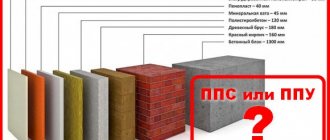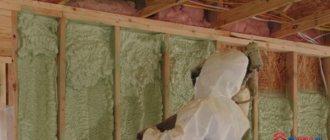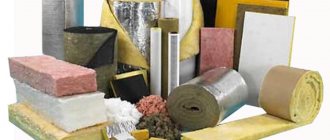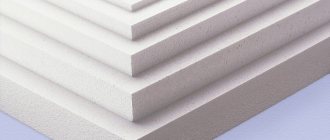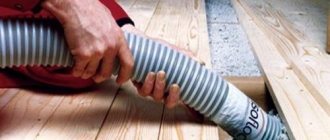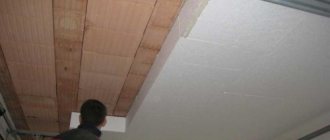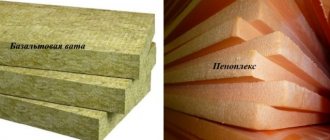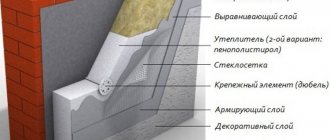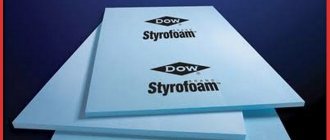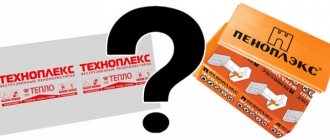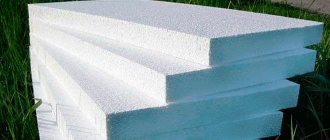What is polyurethane foam
Polyurethane foam refers to a type of plastic that is a product of the oil refining industry. The raw materials for production can also be oils of vegetable origin (soybean, rapeseed, sunflower). But due to their high cost, they are rarely used.
The porous material is 85-90% filled with inert gas. Depending on the cell fraction and wall thickness, several subtypes of polyurethane foam are distinguished regarding strength indicators:
- solid;
- hard;
- soft and very soft;
- viscous;
- elastic.
Important! In construction, energy-saving and sound-absorbing material with a density of 30-86 kg/cubic meter is more often used. m.
Hard PUF
If the indicator is close to 70 or more units, then such PUF products are distinguished by their ability to retain moisture without absorption, which is important for waterproofing work (but constant contact with water is excluded, since the development of a hydration reaction is possible). The thermal conductivity of polyurethane foam ranges from 0.019-0.035 W/m, so the scope of application includes protecting various structures from cooling.
Disadvantages of PPU filler and products made from it
One of the main disadvantages of the PU foam pillow is its relatively low orthopedic properties.
Surely, immediately after purchase, the user will be pleased with how it supports the neck and head. However, over the years, the filler will be pressed under the weight of the head and the pillow will have to be changed. Its average service life is 4-5 years. After this, the polyurethane foam begins to slowly but inevitably deteriorate. It ceases to be elastic enough. Indentations form in the filler, which greatly impairs the quality of sleep. After spending 7-8 hours on such a pillow, a person wakes up with a headache.
Tip: To extend the life of a polyurethane foam pillow, it should be stored in a linen drawer or chest of drawers. With prolonged exposure to ultraviolet radiation, polyurethane foam breaks down faster.
When deciding which is better - a latex or polyurethane foam pillow - we must not forget about the hygroscopicity of the latter. PPU absorbs moisture like a real sponge. Human sweat easily seeps into the pores of the filler and remains in it for a long time. This does not have the best effect on hygiene.
The third significant drawback is the difficulty of cleaning. A PPU pillow can be washed in a regular machine, but this will be of little use. Polyurethane foam needs deeper and more intensive cleaning, and this is only possible through dry cleaning. So, while saving on purchase, the owner will have to periodically spend money during the actual use of the product.
What is foam rubber
Foam rubber is a modification of polyurethane foam. The name of this flexible polyurethane foam comes from the brand of the same name from a Scandinavian material manufacturer. Applications include the production of furniture and sports equipment (filler), construction (insulation against cold and sound). To a lesser extent, the material is used in the automotive, textile, shoe industries, manufacturing of household and medical orthopedic equipment, and soft toys.
If we consider the density of the elastic polymer, it ranges from 5 to 40 kg/cubic meter. m. The air content in the porous modification of polyurethane foam is 90%.
Soft PPU
Regarding rigidity, the material classification is as follows:
- ST - standard polyol foam;
- HL - hard;
- EL - increased rigidity;
- HS - soft;
- HR - elastic;
- LR - viscous;
- RTC is a highly porous reticulated polyurethane foam.
Important! Secondary foam rubber is considered separately, that is, recycled waste is used for production. As a result, the material almost completely absorbs sound and has a high density.
How do the characteristics of foam rubber differ from polyurethane?
The slight difference between foam rubber and polyurethane foam is the chemical composition, but it is considered safe for humans, despite the release of toxic substances during production. An analogy can also be seen in the inertness of materials to biological damage, but poor resistance to UV radiation. The classification is based on density indicators.
Appearance of polyurethane foam when exposed to UV radiation
The structure in both cases is porous, which to one degree or another has a positive effect on the acoustic properties. The main differences in the characteristics of polyurethane foam and foam rubber are the air content, density and rigidity of the materials. According to these indicators, the scope of application also differs.
What is the difference between orthopedic foam and foam rubber?
From the point of view of a chemist, both orthofoam and foam rubber are the same thing. But a springless mattress made from modern orthopedic foam can be of better quality and more comfortable than a regular PU foam mattress.
Elastic foam rubber of the HR brand, which mattress manufacturers call orthopedic foam, is similar in chemical composition to cheaper categories of polyurethane foam, but thanks to the technology of opening the cells it becomes more elastic. To understand what this is all about, consider the figure below - it illustrates the main difference between the types of polyurethane foams.
Scheme of the structure of different types of polyurethane foam
Here is a very schematic representation of the structure of various types of orthopedic foam.
- Low density polyurethane foam, cheap foam rubber. The cells are completely closed, their walls are thin. Material of such a structure easily wrinkles and quickly loses its shape and “gets tired.”
- A structure with closed cells, but with thicker walls. This is what high density foam looks like. Its ability to withstand loads is much better than that of the first type. A mattress made from this material lasts longer, but its elasticity does not exceed normal.
- This is foam, during the production of which the operation of opening the cells was added. The porous structure with perforated walls of air bubbles improves the breathability of the material and its ability to quickly recover after deformation. Such PPU is marked with the letters HR. This type of foam is most often called orthopedic, as it provides increased comfort due to its dynamic response to load.
Thus, the difference between ordinary foam rubber and orthopedic foam lies in the internal structure of the material.
Advantages and disadvantages
The advantages of polyurethane foam materials include resistance to deformation, that is, after compression, the material quickly restores its original shape. Regarding products for washing and cleaning, painting and priming the surface, the ability of foam rubber to absorb liquid, which can occupy up to 40% of the volume of contained air, is relevant. Application is possible in a wide temperature range: from -40 to +100 degrees Celsius.
The service life of elastic polyurethane foam declared by manufacturers is in the range of 5-15 years, and rigid polymer materials can maintain quality indicators for 30-80 years.
Among the disadvantages, there is flammability with the release of toxic substances and toxic smoke harmful to humans.
Behavior of polyurethane foam in open flame
Modern additives allow manufacturers to produce polymer products that do not support open fire. And under the influence of direct ultraviolet radiation, materials begin to deteriorate.
Important! If foam rubber is characterized by a relatively low price, then polyurethane foam as insulation is more expensive compared to other analogues.
Polyurethane-based polymer materials have a porous structure, due to which they have noise-absorbing properties. Depending on its density, polypropylene either absorbs moisture or acts as a water barrier. Hard types are actively used for insulating structures, and soft types are used for filling furniture, toys and sports equipment.
Foam rubber or polyurethane foam - which is better?
Some consumers believe that if upholstered furniture is filled with foam rubber, then such furniture will not last long. It is better to use polyurethane foam analogues for this purpose. Let's try to figure out if this is really the case.
It is interesting that when buyers of upholstered furniture are interested in what kind of filler was used in the manufacture of furniture and say the words foam rubber, polyurethane foam, they do not even suspect that we are, in fact, talking about the same material. Only its names are different. The story is simple. Its roots go back to our Soviet past. In the USSR, when creating upholstered furniture, they used foreign polyurethane foam as a filler. But the company that supplied it was called Porolon. This is how the substitution of concepts arose. Subsequently, throughout the country, the name foam rubber began to be used as the main one.
In essence, polyurethane foam (abbreviated PU) is fine-cell polyurethane foam. Due to its excellent breathability and elasticity, it has become widely used as an insulating, supporting and softening material. Foam rubber is also resistant to dust, not susceptible to mold and hypoallergenic.
The Soviet Union collapsed. Enterprises operating in the post-Soviet space began to produce foam rubber. And here a cruel joke happened with the material. It was of extremely low quality. The density of polyurethane foam was 22, 25. It was simply physically not able to withstand the load. That is why the filler in furniture of that time turned into dust within a few years. This is how people began to believe that foam rubber is worse than polyurethane foam. But time did not stand still. Competition in the market was gaining momentum. Only those enterprises that reached the level of the European standard survived and developed.
Unfortunately, unscrupulous manufacturers still exist today. But they make low-quality products not because there is no good polyurethane foam on the market, but because they are chasing quick profits. Cheap foam rubber allows you to seriously reduce the cost of production. For comparison, let’s say that a “Eurobook” sofa, if high-quality polyurethane foam was used, will retail cost from 25-30 thousand. Cheaper sofas should make you suspicious. Remember the saying about “free cheese”?
Today's foam market is quite rich. Buyers can choose from standard (ST) material, soft (HS), or hard (HL). There is also increased hardness (EL). Particularly popular is the premium comfort polyurethane foam (HR; HR*). In addition, the variety is complemented by special grades of polyurethane foam - sound-absorbing, fire-resistant (FL;FR), viscous - having “memory” (VE).
Different brands of foam rubber differ significantly from each other. For example, let's compare standard ST polyurethane foam with the following markings - 1932, 2536 and 3542. The given numbers indicate such an important physical and mechanical indicator as the elasticity of foam rubber. Moreover, the first two numbers 19, 25 and 35 are the density of polyurethane foam. And the second two numbers 32, 36 and 42 are an indicator of hardness. Based on these consumer properties, the ST 1932 brand is used mainly for the production of good packaging or sound absorption. ST 2536 is suitable for mattresses that can withstand a load of no more than 60 kg. PPU ST 3542 can withstand loads of up to 100 kg. It is easy to understand that the highest quality furniture is made from foam rubber marked HR, HL or HS.
We hope that now it will be easier for you to understand the intricacies associated with choosing furniture made from foam rubber. Check the labels and make the right choice.
